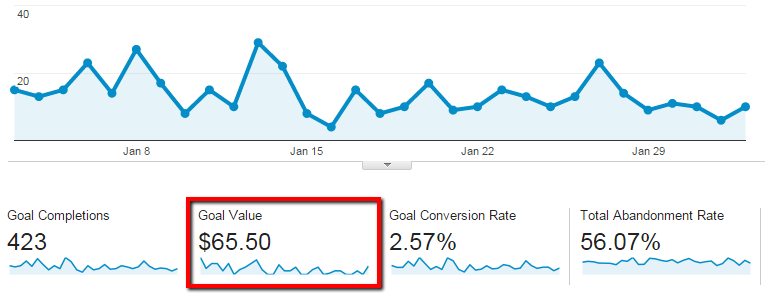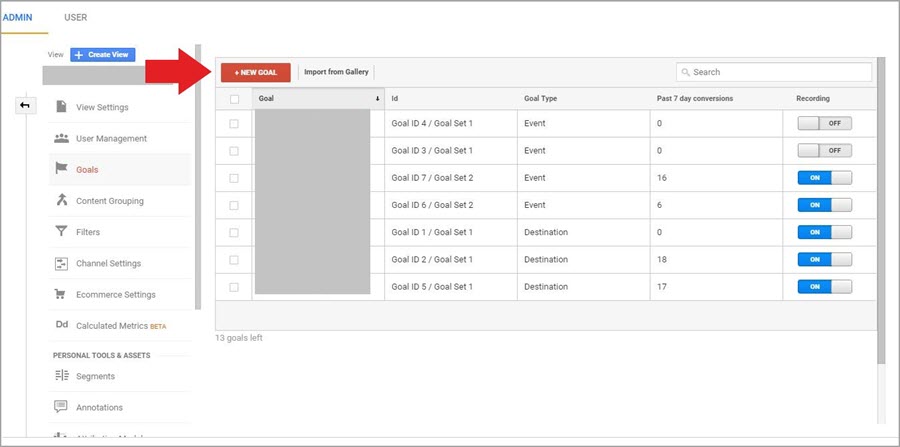Discover the Limitations of Google Analytics Goals: Unveiling the Data Kind That Remain Untrackable
As organizations progressively rely upon data-driven decision-making, recognizing the restrictions of tools like Google Analytics becomes paramount. While Google Analytics Goals offer useful insights right into user communications, there exist information kinds that thwart tracking, posturing challenges to a detailed understanding of individual habits. These untrackable data types question regarding the accuracy and completeness of the analytics data that organizations greatly rely upon for their digital methods. Curious to reveal the surprise unseen areas in your information evaluation process?
Incomplete Individual Journey Tracking
Incomplete user trip tracking within Google Analytics can prevent the capacity to properly analyze customer habits. When the customer trip is not totally tracked, there are voids in the information that stop an extensive understanding of just how users interact with an internet site. This absence of insight can bring about missed possibilities for optimization and improvements to the individual experience.
One typical problem with insufficient customer journey monitoring is the failure to see the complete path that individuals take previously completing an objective or leaving the website. Without this info, it is testing to identify where individuals might be coming across challenges or friction factors that prevent them from transforming. Additionally, insufficient tracking can obscure the influence of certain advertising and marketing efforts or site modifications on customer behavior.
To address this limitation, it is critical to establish appropriate tracking systems within Google Analytics to record the entire customer journey. This might entail establishing up event monitoring, goal funnels, or using devices like Google Tag Manager to make certain that no crucial interactions go unrecorded. By gaining a thorough sight of the user trip, internet site owners can make more educated choices to enhance customer involvement and drive conversions.
Attribution Difficulties
Navigating with acknowledgment challenges in Google Analytics needs an extensive understanding of exactly how various touchpoints add to the overall conversion procedure. Attribution challenges develop from the intricacy of modern-day customer journeys, where individuals communicate with numerous channels before converting. Google Analytics supplies different attribution versions like first touch, last touch, and straight, each supplying a different perspective on how credit history is assigned to touchpoints along the conversion course. Nevertheless, these models may not constantly precisely reflect the real influence of each touchpoint on the conversion.
One typical attribution challenge is the trouble in associating conversions to the appropriate source, especially in instances where individuals engage with multiple channels before transforming. This can bring about mistakes in establishing which advertising efforts are driving the most conversions. Additionally, cross-device monitoring postures an additional acknowledgment challenge, as individuals commonly switch between devices during their trip, making it testing to track their interactions flawlessly. Marketing experts need to carefully analyze and examine acknowledgment data to make educated choices and enhance their advertising techniques properly.
Offline Conversions
Provided the challenges linked with connecting conversions precisely in online channels, the measurement of offline conversions provides a significant chance for marketing experts looking for an extra extensive understanding of their consumers' trip. Offline conversions describe actions that consumers absorb the physical globe, such as making acquisitions in brick-and-mortar shops or over the phone, attending occasions, or engaging with printed materials - what data is google analytics goals unable to track. basics These conversions are important for businesses that run both online and offline, as they provide useful understandings right into the performance of advertising campaigns throughout different touchpoints
Tracking offline conversions generally presented a substantial obstacle for marketers, as it was challenging to link these activities back to details on-line communications properly. Nonetheless, with improvements in modern technology, such as the assimilation of CRM systems, one-of-a-kind identifiers, and voucher codes, organizations can currently link the void between online and offline information to acquire a much more holistic sight of consumer actions. By successfully measuring offline conversions, marketers can enhance their approaches, designate resources extra effectively, and eventually improve the total customer experience.
Cross-Device Tracking
Cross-device monitoring plays a critical function in comprehending the interconnected nature of customers' digital interactions throughout several gadgets. In today's omnichannel globe, where individuals perfectly switch over between tablets, desktops, and smartphones, tracking their habits throughout these tools is important for marketers to acquire an extensive view of their client trip.

Moreover, privacy worries and guidelines such as GDPR and CCPA have further complicated cross-device tracking. With individuals requiring more control over their data and enhanced constraints on monitoring modern technologies, marketers need to locate privacy-compliant and innovative methods to link user interactions throughout devices.
Dynamic Web Content Engagement
Understanding user involvement with dynamic content is crucial in maximizing digital advertising and marketing techniques for boosted target market interaction. Dynamic material refers to internet site elements that alter based on customer behavior, choices, or other elements, providing a tailored experience. Nonetheless, tracking user interactions with vibrant content postures obstacles for typical analytics devices like Google Analytics.
While Google Analytics can track fundamental communications like clicks and page sights, it the original source may battle to capture more nuanced involvements within dynamic web content. what data is google analytics goals unable to track. Metrics such as time invested in details dynamic elements, hover actions, or interactions within pop-ups are usually not easily quantifiable making use of conventional tracking methods. This restriction hinders marketing experts' ability to fully grasp exactly how individuals are like it engaging with dynamic content and customize their methods appropriately

Verdict
In verdict, Google Analytics objectives have limitations in tracking insufficient customer trips, associating conversions properly, recording offline conversions, tracking cross-device communications, and gauging dynamic material engagement. These constraints highlight the importance of exploring added monitoring techniques and devices to gain an extra extensive understanding of user actions and conversions past what Google Analytics can supply.
While Google Analytics Goals deal important understandings into customer communications, there exist information kinds that elude monitoring, positioning difficulties to a detailed understanding of individual behavior.Incomplete customer trip tracking within Google Analytics can impede the capability to accurately examine customer behavior. When the customer trip is not totally tracked, there are spaces in the data that protect against a thorough understanding of just how customers engage with a web site.One common issue with insufficient customer trip tracking is the lack of ability to see the full path that customers take in the past completing an objective or leaving the website. By getting an extensive view of the user journey, web site proprietors can make more informed choices to enhance user engagement and drive conversions.